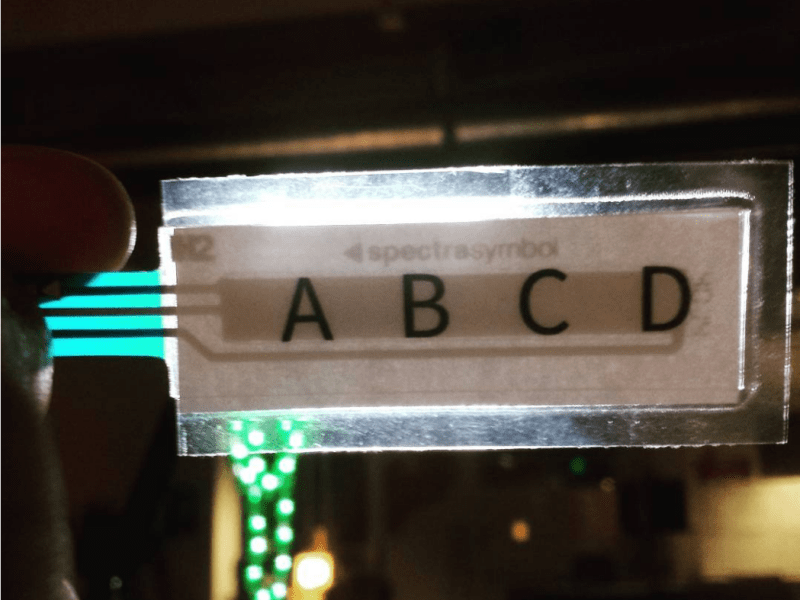[Nick Poole] over at SparkFun was playing with some force resistive strips. He wanted to use them as a keyboard input. It occurred to him that the office laminator could feasibly laminate a sheet of paper and the resistor into one sealed piece.
He put the assembly inside the pouch, ran it through the laminator, and it worked! After this success he built on it to make a full resistive keyboard. Then it occurred to him to ask, as it would to any good hacker with access to expendable company property “what else can I laminate”? Basically everything.
His next experiment was an LED throwie. No problem. Bolstered by the battery not exploding, he got more creative. The next victim was one of SparkFun’s Arduino-compatible boards and his business card. Success again.
Finally he went full out. Since the input rollers to the laminator are soft silicone it can apparently accommodate a fair amount of variance in height. He threw a full noise maker keyboard with resistive pads and a USB cable into the assembly. No issue.
It seems like a pretty good technique for making keyboards, weather proof circuits, and more.
















NEWS FLASH…. Employee laminates himself behind bars for using company property….. :)
“… however in a related development, employer recovers encrypted files off hidden USB drive and saws through bars to escape”. ;-)
I wonder how many times you can laminate a laminating pouch inside a laminating pouch…
Whichever co-worker leaves a key lying around, try it on that. >:-)
I once spent an hour heat-sealing a coworkers phone inside a bag and then sealing that bag inside a bag full of water. Then froze the water. We never did get much work done at that job…
Works best using an object oriented laminator.
The guy must have been bored as heck at work the first picture in the link is laminated razor blades. But it is a great idea to waterproof electronics
That is very handy. If you don’t have that gear you could try dipping in silicon rubber that has been diluted in a solvent, a volatile hydrocarbon should do the job.
Experience tells me that this will not be watertight, but might be sufficient for many things.
Water will get in where the penetration to the edge is, unless the material coming through is itself watertight and fully bonds to the lamination material with no gaps. Paper doesn’t make it, and neither does anything of significant thickness, like the flex from the resistive pad, especially if if doesn’t have smoothly feathered edges.
It will likely hold up for a while as long as it doesn’t have long term direct exposure to water. Submersion or unprotected exterior exposure in a place with significant rain will take a toll.
Still an improvement over raw components left in the rain :)
So for objects penetrating the seam, coat them with something: caulking, rubber-toughened cyanoacrylate, ?
Have the coating take place within the perimeter of the laminate.
Perhaps you could take thin shavings of a hot glue stick and place this between the pouch and the protruding (flat) object at the seam before laminating. This should give extra material to seal the steps in thickness.
hot-melt-glue sticks shrink as they cool and again after they cool, im not sure why but i think it might have something to do with outgassing? ie drying
The bit of hot glue stick trick is used to waterproof heatshrink tubed stuff, put a bit of hot glue in before heatshrinking and presto.
Absolutely and improvement over nothing. Water is insidious. It will find any way in that it can. A few paper fibers that come through the joint is enough over time. I wasn’t trying to give the impression that it won’t help, but that it is not likely to be water/weather proof, just more resistant.
The only reasonably sure seal over time seams to be (pun intended) a complete seal around the perimeter. I never tried any further sealer at potential leak points (a number of reasons, among them being not my laminating gear), but paper or porous material coming out will bring water in.
In other situations, I have plasticized paper with an acrylic soak (clear spraypaint works as does dipping) and got excellent life.
Which laminator was used ?
It appears to be a Fellowes Venus VL125 Laminator or similar model.
It is definitely an older machine but I’m impressed that it did so well!
For things that won’t go through a laminator, wouldn’t a tacking iron work to run it around the laminate at the edges?
Hey, I’ve got one of those!
Next test should be done with Han Solo. No carbonite required.
Weatherproof…
That’s funny.
Leave it outside in the sun for a week. See how weatherproof that plastic is.
You know what I really have the urge to do with this? Build a fold flat robot. … well flattish… and I don’t have a clue why.
I did something like this before using a peizo speaker, and a small smd led and made a bookmark out if it.
must be an entertaining lightshow when you move your stack of bookmarked books over a bumpy surface XD
… or modulated laserbeams making sound … LED as solarcell
Wonderful post.This is nice post and gives in depth information. I like to read this post because I met so many new facts about it actually.